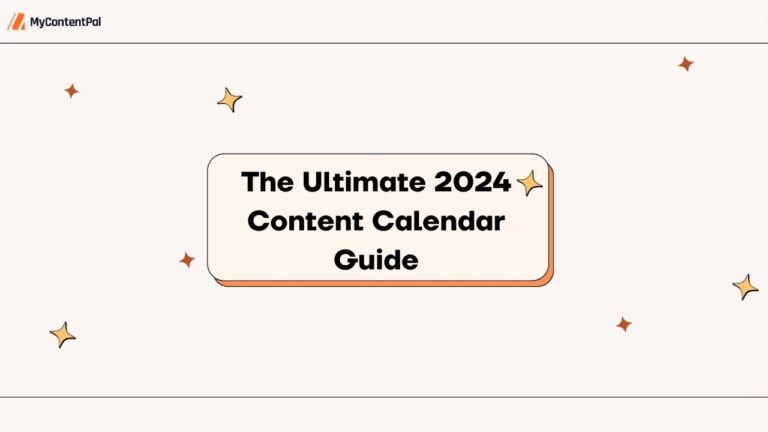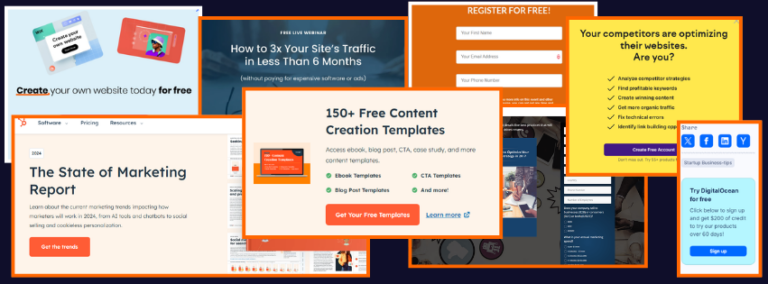You need to produce engaging, valuable, quality content. That’s obvious.
But producing it consistently is the real challenge. And that is where the notion of Content at Scale comes in as a critical B2B marketing strategy. It enables you to scale up content production while maintaining quality.
How do you do it?
By adopting these 10 strategies to efficiently produce content:
- Quality, not quantity
- Using templates
- Create target personas
- Use a publishing calendar
- Adopt AI (cautiously)
- Focus on the right topics
- Create content outlines upfront
- Repurpose content
- Create style guides
- Hire a content creation team
10 Strategies to Efficiently Produce Content at Scale
Here’s how we’re able to create content – and associated social media posts – at scale, without compromising on value or engagement.
1. Quality not quantity
When you think of how to scale content creation, you’re probably thinking that quantity trumps quality.
But, the key to scaling content creation is to maintain your usual high-quality, human-generated content, without impacting the value.
The trick is to produce quality, engaging content quickly and efficiently, not just to pump out stacks of thin content.
You need to continue to focus on crafting and publishing content that aligns with your company goals and addresses the needs of your target audience.
Inform.
Entertain.
Educate.
And, eventually, convert.
2. Using templates
We use content templates for various content types which allows us to produce content at scale.
Having a template means you can quickly produce consistent content without exhausting your writing team.
Plus, it ensures consistent quality across your content. Our templates are adaptable, meaning you can personalise them to suit your brand voice or usual article layouts. Check out our guide on how to create blog post templates.
3. Create target personas
Researching your target audience is key to your content strategy. Before you start writing, you need to know who you’re writing for.
If you don’t have your audience in mind, your writing will not be focused or address specific pain points that your audience commonly struggles with.
When you conduct market research (through surveys, interviews, reviews and polls) you will gain insights into what your audience likes and dislikes, what they struggle with, and what they need.
You can then use this information to craft target personas – a fictional representation of the person you’re producing content for.
By doing this, you can determine which sub-topics to cover, and you can cluster your keywords accordingly.
This research will also tell you where your audience is in the sales cycle, allowing you to use appropriate language to shuffle them along until they convert.
4. Use a publishing calendar
Having a content calendar can help you visualise what needs to happen when, and by who. It gives you an instant overview (daily, weekly or monthly) of:
- Which author needs to write content
- About which keyword
- And by when it must be completed.
This helps you keep track of all upcoming tasks to ensure you have capacity. It will also help graphic designers and the web dev team stay in the loop.
It’s not possible to start scaling content creation without a calendar in place, as you won’t be organised without one.
There are various tools and software to help you keep track, including Google Sheets, Trello, Evernote and Airtable. As writers complete posts or articles, they can link to the content directly on the calendar, where it can be checked by proofreaders and uploaded to your site.
5. Adopt AI (cautiously)
Artificial intelligence is unavoidable, and it can be used in content production to improve efficiency. AI tools, like ChatGPT, Perplexity or Google’s Gemini can help you:
- Overcome writer’s block
- Summarise difficult topics
- Create headings/outlines
- Craft video scripts for content marketing
- Help with editing written content.
There are tools that we use to speed up the proofing process, like Grammarly and Hemingway, to spot mistakes and improve readability.
Just note, that although AI can be super helpful, it can also become a hindrance. When used for writing, it can be repetitive, full of fluff, and contain very inaccurate or out-of-date information.
When it comes to scaling content production, AI is an assistant, not a replacement for human abilities.
6. Focus on the right topics
Successful scaling relies on covering the right topics. Valuable, engaging, evergreen subtopics are ideal because they won’t need regular updating. You can then intersperse it with more stats-heavy content that will require frequent revisiting.
The key is to select topics that can be revisited as campaigns change… topics that remain relevant to your target audience even over longer periods.
7. Create content outlines upfront
I’ve already briefly mentioned outlines in the section about AI above, but a solid content outline deserves its own mention when it comes to scaling content.
Content templates are the best start-off points, especially for long informational articles. However, before you get started with any kind of content, you need to draft your outline.
Heck, I even drafted an outline for this content before getting started!
Writing without an outline is like trying to build a house without a plan. Sure, it is possible, but it will be messy, confusing, of poor quality, full of mistakes and probably take about 10 times as long than it should.
Once you start mapping out your content in your content calendar, your content strategist (or similar manager) should create outlines for each piece of content. Do this by researching your topics and keywords to see what is ranking, and mimic (but don’t copy) what your competitors are doing.
Consider:
- Article length
- Use of primary and secondary keywords
- Heading format
- Any unique aspects of the ranking pages
By working ahead, your writing team will be ready to flesh out the outline, do their research, and create quality content that converts.
8. Repurpose content
If you have content that is performing well or performed well in the past, it is ready for repurposing.
You can update any information, adapt the tone to your new target audience, and slightly amend the calls to action.
What it does is save you plenty of time compared to having to create content from scratch.
When repurposing existing content, refer to your target personas and adapt the headings, keywords and general angle of the piece to make sure you are writing content for your audience and potential new customers.
For example, if your content resonates well with a specific buyer persona, you can tweak it slightly so it appeals to a different persona’s needs.
9. Create style guides
Creating a kind of style guide – or communication guide – for your writers will ensure your content contains consistent, on-brand messaging.
Your style guide needs to include:
- Tone of voice
- Brand voice and terminology
- Formatting guidelines
- Guidance regarding images
- Examples of content
- How to appeal to the target audience
- Call to Actions (CTAs) to include
- Whether to use jargon or general language (Hint: the latter is always the better option)
10. Hire a content creation team
I know it, you know it – content creation takes time.
It’s not just about getting an in-house writer to do the occasional blog post – you need an entire team. And once you start scaling, things can get especially tough. You can hire freelancers, but they often lack the dedication you need for content scaling.
And that’s why outsourcing your content to a company like My Content Pal is a good idea. You can focus on running your business, while we focus on creating content.
A content team is experienced, with all the skills to produce high-quality content, consistently, whenever you need it.
They can help you establish a content library that will have you standing out from the competition and climbing the SERPs.
Final Thoughts On Scaling Content
It’s easy to fall into the trap of producing pages and pages of content without giving it much thought. But you’ll just be wasting your time – and the time of your loyal customers. If you want to scale the content creation process, you need to increase your quantity while still maintaining quality.
It doesn’t have to be tough – My Content Pal has templates to help you scale content creation, as well as an expert team of content writers for B2B businesses to take the content worries off your shoulders.




